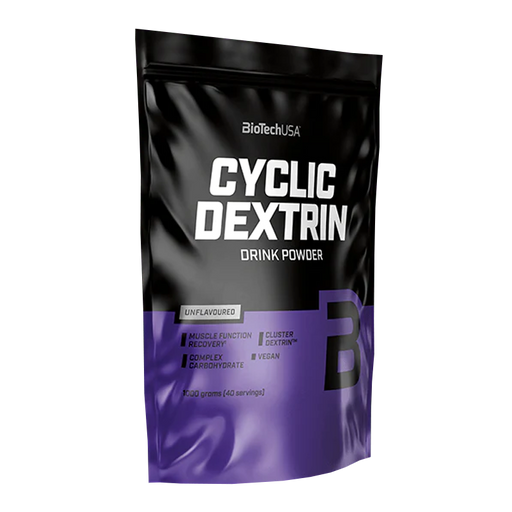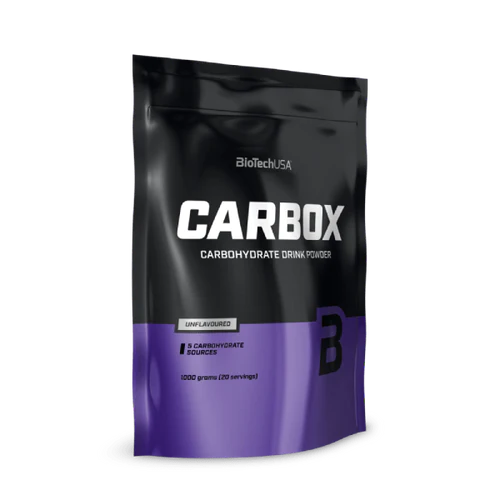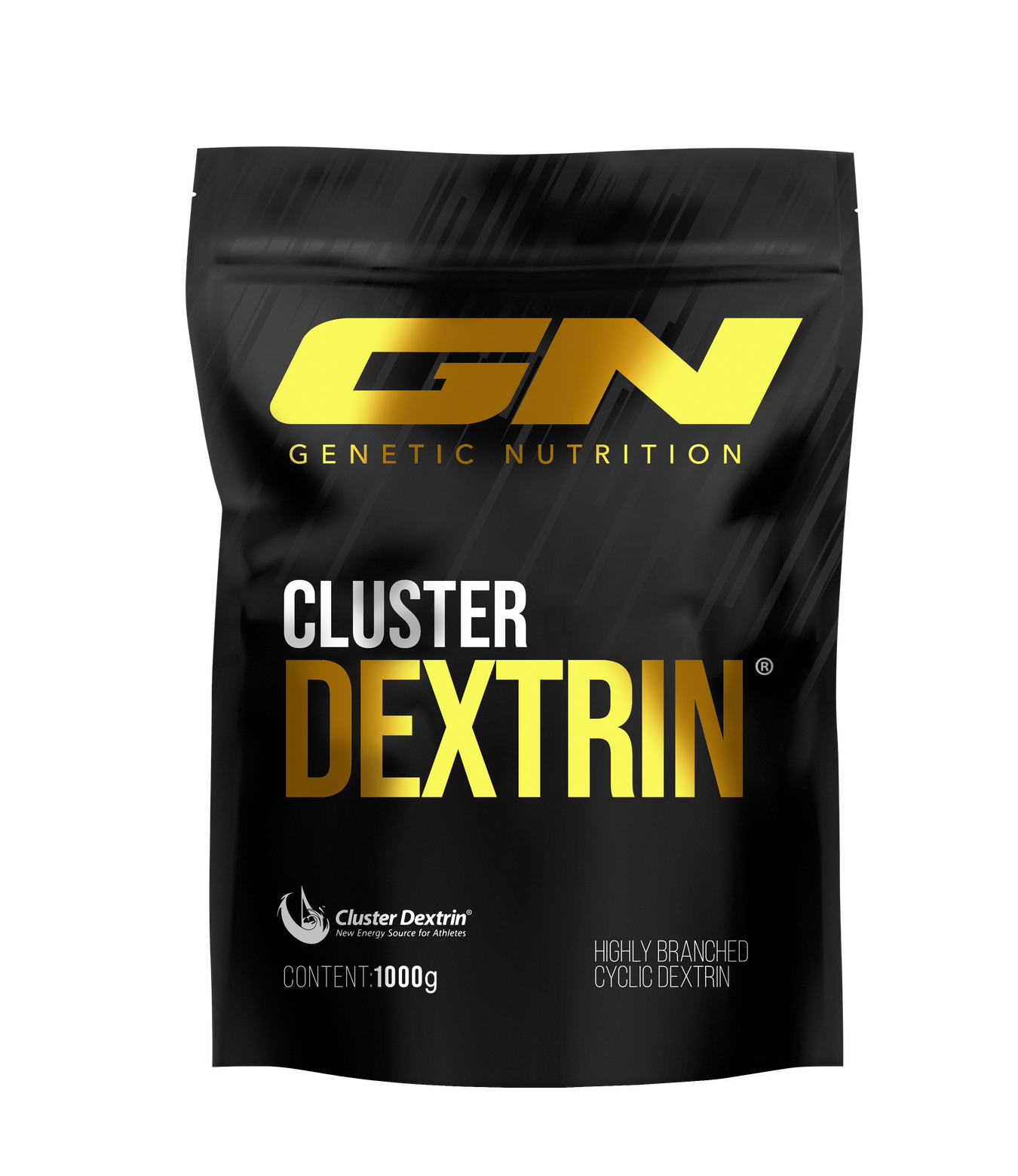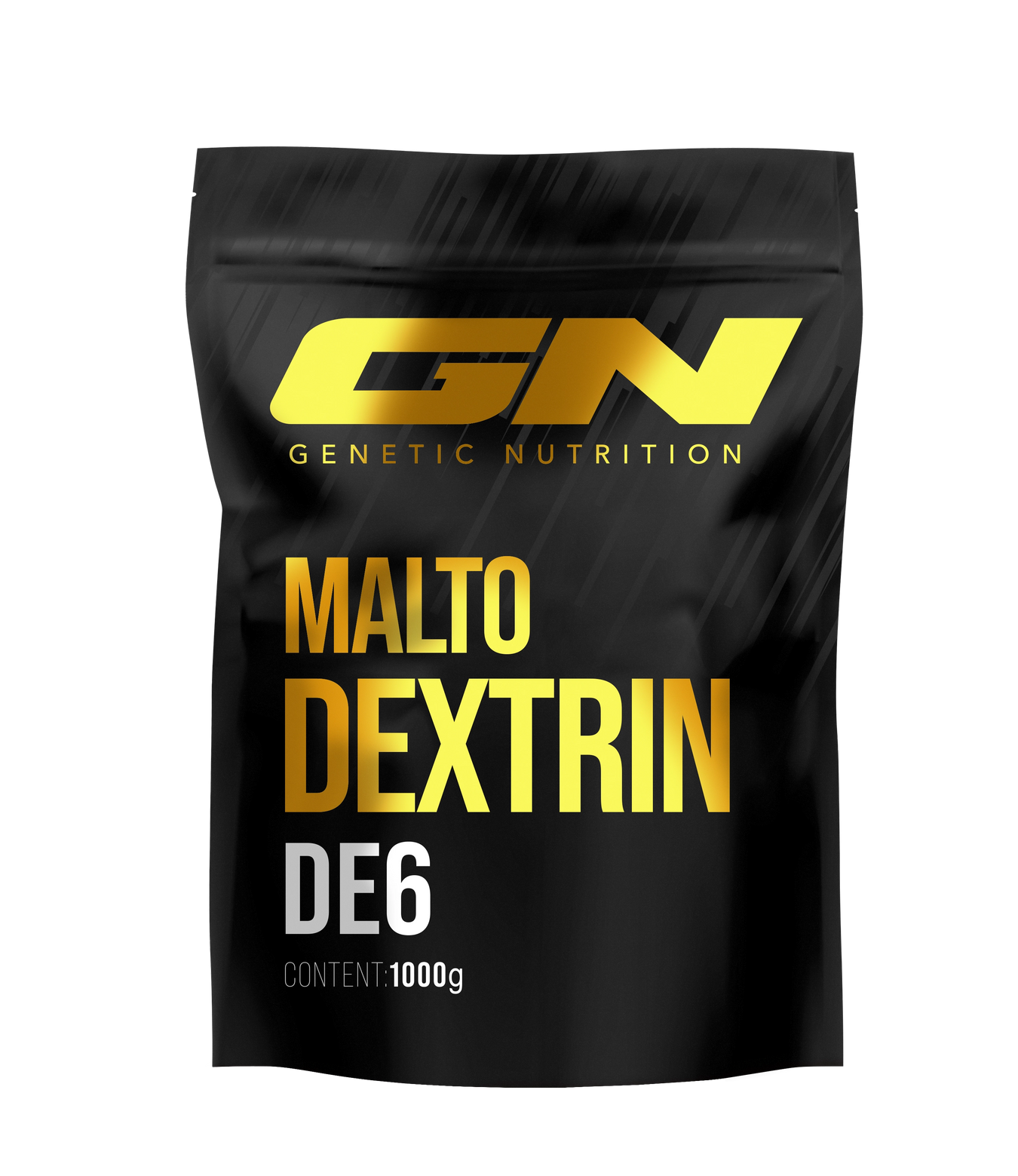Carbohydrates
Filters
- Biotech USA Remove filter
- Clear all
- Biotech USA Remove filter
- Clear all
-
 Save 11%
Save %
Original price €25,90Original price €25,90 - Original price €25,90Original price €25,90Current price €23,05€23,05 - €23,05Current price €23,05| /
Save 11%
Save %
Original price €25,90Original price €25,90 - Original price €25,90Original price €25,90Current price €23,05€23,05 - €23,05Current price €23,05| /Cyclic Dextrin · 1000g
Biotech USA3 reviewsContains complex carbohydrates With a low glycemic index Contains only cluster dextrin™ Neutral taste
Original price €25,90Original price €25,90 - Original price €25,90Original price €25,90Current price €23,05€23,05 - €23,05Current price €23,05| /Save 11% Save % -
 Save 11%
Save %
Original price €44,90Original price €44,90 - Original price €44,90Original price €44,90Current price €39,96€39,96 - €39,96Current price €39,96| /
Save 11%
Save %
Original price €44,90Original price €44,90 - Original price €44,90Original price €44,90Current price €39,96€39,96 - €39,96Current price €39,96| /Hyper Mass · 4000g
Biotech USA7 reviewsProtein and carbohydrate fusion enriched with creatine monohydrate Increases daily protein intake for muscle mass Contains 3,250 mg creatine monoh...
View full detailsOriginal price €44,90Original price €44,90 - Original price €44,90Original price €44,90Current price €39,96€39,96 - €39,96Current price €39,96| /Save 11% Save % -
 Save 11%
Save %
Original price €9,90Original price €9,90 - Original price €9,90Original price €9,90Current price €8,81€8,81 - €8,81Current price €8,81| /
Save 11%
Save %
Original price €9,90Original price €9,90 - Original price €9,90Original price €9,90Current price €8,81€8,81 - €8,81Current price €8,81| /CarboX · 1000g
Biotech USA1 reviewBiotech CarboX™ is a complex carbohydrate formula with delayed release Contains various forms of slow, normal and fast absorbing carbohydrates Als...
View full detailsOriginal price €9,90Original price €9,90 - Original price €9,90Original price €9,90Current price €8,81€8,81 - €8,81Current price €8,81| /Save 11% Save %
According to the so-called law of isodynamics, the three energy-providing nutrients carbohydrates, fats and proteins can theoretically replace each other in energy production.
The isodynamic quantities are
- 1 g fat = 2.27 g carbohydrates = 2.27 g protein
- 1 g carbohydrates = 1 g protein = 0.44 g fats
The proportion of nutrients in the daily food energy recommended by the DGE should be as follows:
- Carbohydrates: 55-60 % energy (kcal%)
- Fats: 25-30 % energy (kcal%)
- Proteins: 10-15 % energy (kcal%)
In fact, however, these ratios do not correspond at all with our current civilized diet. The existing poor carbohydrate-fat ratio, in which 40% of the energy in the diet comes from fats but only 40% from carbohydrates, has an unfavorable effect on health, well-being and body weight. In recent years, the consumption of valuable, complex carbohydrates (in cereals, potatoes, vegetables) has decreased, while the intake of simple sugars ("empty calories") and fats has increased considerably. This is also the context of the problem of high levels of overweight (obesity), which is a risk factor for the development of various diseases such as cardiovascular diseases, musculoskeletal and psychological diseases, diabetes, etc.
Carbohydrates
Carbohydrates are considered the most important source of energy for all physical and mental performance. A distinction is made between monosaccharides (monosaccharides), disaccharides (disaccharides), oligosaccharides (made up of 3-10 monosaccharides) and polysaccharides (polysaccharides).
Examples:
Simple sugars (monosaccharides)
- Dextrose, also known as grape sugar or glucose
- Mannose, an epimer of glucose
- Fructose, also known as fruit sugar
- Galactose, also known as mucilage sugar
- Ribose, part of ribonucleic acid (RNA)
- Deoxyribose, part of deoxyribonucleic acid (DNA)
Disaccharides (disaccharides)
- Sucrose, also known as beet sugar or cane sugar (glucose + fructose)
- Lactose, also known as milk sugar (glucose + galactose)
- Lactulose, a synthetically modified milk sugar
- Maltose, also known as malt sugar (glucose + glucose)
- trehalose
Multiple sugars (polysaccharides)
- Starch
- cellulose
- Glycogen
The basic building block glucose is the only form of carbohydrate that can be used to produce energy. Therefore, the complex carbohydrates must first be broken down or converted into the basic building block glucose. This is done by enzymes (amylases) in the mouth and stomach, such as ptyalin. Carbohydrates (glucose building blocks) can provide energy for muscle contractions up to four times (anaerobically) or twice (aerobically) faster than fats, which always require oxygen to burn. On the other hand, glucose, a monosaccharide, is the only source of energy for the brain and nervous system. Therefore, in its absence, glucose must be synthesized from amino acids by gluconeogenesis (the formation of new glucose).
If no amino acids are available from the diet (there is no immediate protein store), muscle protein is broken down (anti-catabolic effect). Amino acids are released from the muscle proteins and released into the blood for glucose synthesis. This is now also known among strength athletes. In order to minimize this anti-catabolic effect and conserve protein reserves, athletes must eat a diet rich in carbohydrates.
Carbohydrates in food
Simple sugars such as glucose, fructose and galactose are mainly found in fruit and honey. Important disaccharides contained in food are milk sugar (lactose), malt sugar (maltose), which is found in beer, for example, and cane or beet sugar (sucrose), which is contained in commercially available household sugar. Complex polysaccharides are found in the form of starch, especially in potatoes, rice and cereals.
Glycemic index (GI)
The glycemic index (GI) indicates the blood sugar-increasing effect of certain carbohydrates or carbohydrate-containing foods in figures. The reference value is glucose (dextrose), which has a glycemic index of 100. It is not only the carbohydrate content of a food that is decisive for the rise in blood sugar, but also its composition. Pure glucose, for example, is absorbed quickly and directly into the blood and the blood sugar level rises rapidly. Foods that contain more complex carbohydrates (primarily starch) paired with fiber are digested much more slowly and the carbohydrates are continuously absorbed into the blood.
There are no blood sugar peaks. The WHO has recommended the glycemic index for the selection of carbohydrates as part of a healthy diet. Foods with a low GI are to be preferred. These do not suddenly raise blood sugar levels and the pancreas does not have to constantly produce excessive amounts of insulin, the body's own hormone that serves to lower blood sugar levels. The organ is not equipped for a constant high sugar load, which can result in a decline in its ability to function and ultimately manifest diabetes mellitus.
Which carbohydrates are recommended for athletes?
Simple carbohydrates (mono- and disaccharides) such as glucose, household sugar (sucrose) and fructose (fruit sugar) are "empty calorie sources", i.e. they provide no vitamins or minerals apart from calories. With regard to blood sugar levels, the complex carbohydrate sources, e.g. bananas, cereal products, potatoes, fruit, vegetables and pulses, have the advantage that they are not broken down into glucose as quickly and therefore do not lead to a rapid rise in blood sugar levels. Simple carbohydrates (sugar, fructose, glucose) cause a rapid and high rise in blood sugar due to their rapid absorption into the blood, which results in a large release of insulin. Insulin causes an influx of glucose into the muscle cells for energy utilization or a build-up of energy reserves in the form of glycogen or, if these are full, of fat. This causes the blood sugar level to drop so quickly that hypoglycemia may occur. This results in a feeling of hunger.
Sports medicine studies have shown that it makes sense to increase carbohydrates during exercise lasting more than 45 minutes. It has been shown that carbohydrates can be digested even during the most strenuous exercise and passed on to the muscle cells through the blood. This allows you to conserve glycogen reserves and maintain exertion for longer. Bananas are an excellent source of carbohydrates as they contain a favorable mixture of complex and simple (fast) carbohydrates. Its low glucose content is immediately absorbed into the blood, while the abundant starch is slowly absorbed, and the fructose it contains is quickly absorbed into the blood, but is only slowly converted into glucose (dextrose) over the course of the following hour. This results in an immediate, slight but constantly elevated blood sugar level at a favorable level for a long-lasting effect at high performance. This is why bananas are not only a popular snack in tennis.
Inadequate supply
An insufficient intake of carbohydrates can be compensated to a certain extent by dietary fats. If both carbohydrates and fats are missing as energy suppliers, protein is broken down instead of the normal energy sources. Prolonged deficiencies can lead to muscle breakdown, for example. A sufficient intake of carbohydrates, on the other hand, has a protein-saving effect. Excessive carbohydrate intake, on the other hand, is converted into body fat and stored in fatty tissue in the long term once the normal storage form has been exhausted, i.e. the glycogen reserves have been replenished. The result is weight gain.
The importance of glycogen stores
The human body only has a limited supply of carbohydrates and must therefore constantly replenish its stores through food, otherwise premature fatigue and inadequate regeneration after training can result. Glycogen stores are normally between 300-400g, with 1/3 being liver glycogen (60-100g) to regulate blood sugar levels and 2/3 being muscle glycogen. With a normal mixed diet, an average of 1.5g of glycogen per 100g of muscle mass can be stored in the muscles, while this value can increase to 2.0g/100g of muscle mass with a carbohydrate-rich diet. Training can significantly increase the ability to store glycogen in the muscles.
Increasing muscle glycogen stores through "carbo-loading" Athletes can increase muscle glycogen stores to up to 2.5 g per 100 g of muscle mass.
Supercompensation of muscle glycogen stores:
If glycogen stores are almost completely depleted after intense physical exertion, they can be increased above the initial level during the regeneration phase if the diet is appropriately high in carbohydrates (60-80% of total energy intake). The first phase, in which carbohydrates are stored most quickly in the muscles, lasts for the first 10 hours. This finding shows how important it is to consume sufficient carbohydrates within the first few hours after the end of exercise. However, the prerequisite is always that they are depleted beforehand through correspondingly intensive endurance exercise.







